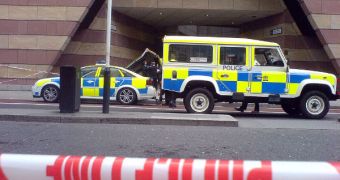Spanish researchers from the University of Salamanca have recently developed a new method of extracting metric data from single photographs of crime scenes. The group explains that its technique relies on making out the most important structural components of the picture, and then relating them to each other to reconstruct the scene. They say that the system has already been developed to a point where accurate 3D reconstructions of the place depicted in the photographs can be modeled, based solely on limited amounts of information.
“We have studied an unprecedented and original line of research in the field of criminology and forensic engineering, which makes it possible to derive metric data from a single image,” Diego Gonzalez-Aguilera tells SINC. He is a coauthor of the study detailing the new find, and also a researcher in the university's Department of Cartography and Soil Engineering. The paper that Gonzalez-Aguilera wrote with colleague Javier Gomez-Lahoz appears in the current issue of the Journal of Forensic Sciences. The experts say it provides “a novel approach for documenting, analyzing and visualizing crime scenes.”
According to the duo, easily identifiable details are the first ones to be picked up by the new algorithm. Then, a number of vanishing points – convergence point of straight lines projected in one direction – are collected. By relating these features with at least one distance (height, depth, or width) from the image, the new method can “automatically and robustly” determine the main features of the crime scene, the investigators report. “Until now, this discipline required at least two images to be used in order to reconstruct a crime scene, but now we have broken that barrier,” Gonzalez-Aguilera says.
As in previous reconstruction methods, the main elements are distances, angles and surfaces. When a computer program has these data, it can easily reconstruct just about anything. The experts say that, while at first it may appear more suitable to use multiple pictures, this is actually not desirable. They explain that it is very difficult to accurately overlap multiple pictures, and that the possibility for error on the part of the forensics expert increases when this is done poorly, or sloppily. The team concludes by saying that the new method was developed within the field of photogrammetry, which allows for the reconstruction of two-dimensional images in 3D.

 14 DAY TRIAL //
14 DAY TRIAL //